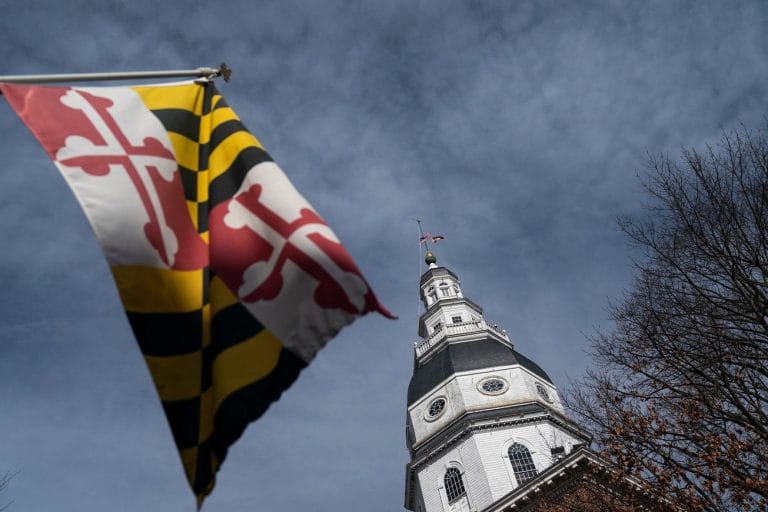🎧 Listen to This Article
On Tuesday, Maryland Gov. Wes Moore will law a sweeping $67 billion state budget for fiscal 2026 that includes more than $1.6 billion in new taxes and fees. The signing ceremony capped one of the most turbulent legislative sessions in recent memory, as lawmakers scrambled to close a multibillion-dollar budget gap while navigating the economic fallout of President Donald Trump’s renewed federal austerity agenda.
Moore, a Democrat in his third year as governor, described the session as a test of resilience. “This was not just about balancing a budget,” he said. “It was about weathering two distinct storms, a financial crisis and a fiscal crisis, amid a White House determined to attack our economy.”
The new budget, passed by the state’s Democratic supermajority, aims to address a projected $3.3 billion structural deficit for the coming fiscal year. According to state analysts, another shortfall is anticipated in 2027, with the gap widening to $6 billion by 2030.
Federal Shockwaves and Local Consequences
The urgency was amplified after President Trump began his second term in January by launching aggressive cuts to federal employment and discretionary spending. With a high concentration of federal workers, contractors, and grant-funded institutions, Maryland is uniquely exposed to shifts in Washington.
In March, Moody’s Investors Service named Maryland the state most at risk for fiscal instability, citing its heavy dependence on federal funding. The rating agency subsequently downgraded Maryland’s coveted Aaa credit rating to Aa1, which was the state’s first such downgrade since 1973.
Legislative leaders, including Senate President Bill Ferguson (D-Baltimore City), said the economic volatility from Washington was a driving force behind the difficult choices made this session.
“By far the most challenging one that I’ve experienced in 15 years,” Ferguson said. “The volatility from Washington made this incredibly difficult.”
A Patchwork of Cuts, Transfers, and New Taxes
To close the gap, the state implemented approximately $2 billion in spending cuts, partially achieved by holding open vacant positions, deferring costs to local governments, and drawing from special-purpose funds.
However, spending reductions alone proved insufficient. The budget package also includes over $1.6 billion in new taxes and fees, most notably a 3% tax on digital services and technology, projected to generate $500 million annually. Two new upper-income tax brackets were also introduced, though Moore emphasized that 92% of Maryland taxpayers will receive a modest refund or see no change in their tax bills.
According to state officials, most residents can expect a refund ranging from $50 to $65.
Republican Pushback
Despite the administration’s assurances, Republican lawmakers were quick to criticize the new tax regime.
“Let’s be very clear today’s bill signing wasn’t a celebration of tax relief,” said Senate Minority Leader Steve Hershey (R-Upper Shore). “It was the final approval of a growing list of new taxes. The Governor has now made permanent the tax-and-spend culture that’s already driving people and businesses out of Maryland.”
Vetoes and Political Fallout
In a sign of lingering tensions, Moore used his line-item veto authority last week to reject two budget provisions linked to separate bills he vetoed. Those decisions, part of a broader slate of nearly two dozen late-session vetoes, may force the legislature to reconvene before the end of June if lawmakers seek to override them.
The vetoes have added to what critics call a chaotic and reactive governing environment, primarily fueled by national uncertainty.
Looking Ahead
The $67 billion budget is only 1% larger than the current fiscal year, but the general fund component directly affects Maryland taxpayers, which is $400 million smaller. That contraction reflects the state’s budgetary pressures and a shifting strategy that increasingly leans on local governments and fee-based funding streams.
While Moore and his allies have framed the session as a triumph of adaptability and leadership, the reality is that Maryland’s economic future remains precarious. With the state’s top-tier credit rating lost and structural deficits looming, policymakers will face intense pressure to stabilize the fiscal outlook in the coming months, especially as federal uncertainty persists.
“We had to be nimble in the face of this uncertainty and courageous in the face of chaos,” Moore said. “This was a budget built not just on dollars but determination.”
For further details, clarification, contributions, or any concerns regarding this article, please contact us at editorial@tax.news. We value your feedback and are committed to providing accurate and timely information. Please note that our privacy policy will handle all inquiries.



